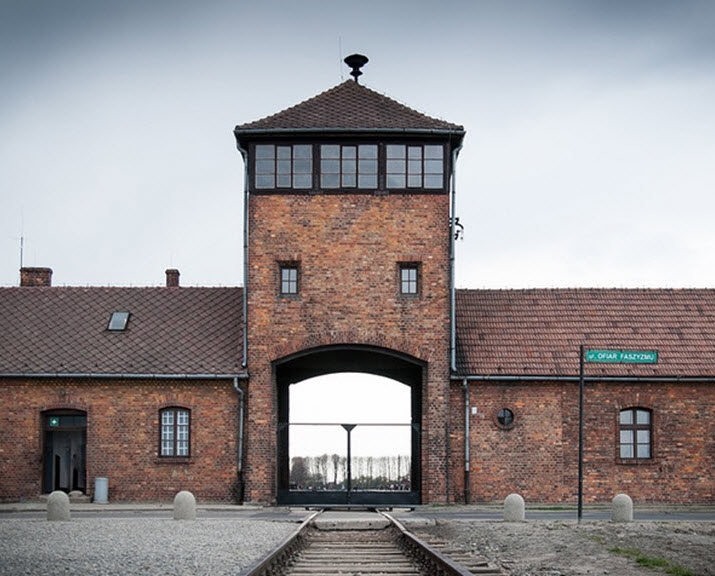The Auschwitz-Birkenau Memorial and Museum is located in Oświęcim (German: Auschwitz) in Poland. It includes two former nazi concentration and extermination camps: Auschwitz I and Auschwitz II – Birkenau. The distance between them is roughly 2 km and is a fairly easy walk.
The memorial and museum covers a total of 191 hectares and includes several original buildings. 171 hectares belong to in Auschwitz II – Birkenau and 20 hectares to Auschwitz I. The train ramp between Auschwitz and Birkenau is also included in the areas of remembrance.
Visitors usually go on a guided tour, but it is permissable to visit without a guide during certain parts of the day. The standard guided tour takes three hours.
Where is the museum and memorial?
The museum and memorial is located near the town Oświęcim in southern Poland, roughly 50 km west of Kraków. More specifically, the main museum is in the village of Brzezinka, west of the railway station.
Coordinates: 50°2′20″N 19°10′30″E
Getting there by road
Oświęcim is located at the intersection of National Road 44 and the local roads 933 and 948.
The main bus station in Oświęcim is located in the eastern part of town.
Getting there by railway
The railway station in Oświęcim is found in the northwestern part of town, and the village of Brzezinka – where you find the main museum – is located west of the railway station.
- Trains from cities such as Vienna (in Austria), Prague (in the Czech Republic), Krakow (in Poland) and Czechowice-Dziedzice (also in Poland) goes to Oświęcim.
- It is also possible to take a local train from Katowice to Oświęcim.
Origins
The museum was created by an Act passed by the Lower House (the Sejm) of the Polish Parliament on 2 July, 1947.
A driving force behind the creation of the museum was the former concentration camp prisoner Kazimierz Smolén, who served as the director of the museum from 1955 to 1990. It was declared a UNESCO World Cultural Heritage in 1979.
About the Auschwitz concentation camp complex
By the end of WWII, the Auschwitz concentration camp (Konzentrationslager Auschwitz) complex contined over 40 concentration and extermination camps in Nazi-occupied Poland.
Auschwitz I was the main camp (Stammlager) in Oświęcim. Auschwitz II – Birkenau was located roughly 3 km away, in Brzezinka. Another notable camp within the complex was Auschwitz III – Monotwitz, a labor camp were prisoners worked in a synthetic-rubber factory.
An estimated 1.3 million people were sent to the Auschwitz complex and at least 1.1 million of them died there. Many were killed in the gas chambers, but prisoners also died of a lethal combination of severe malnutrition, intense forced labor and infectious disease. Individual executions also occurred, as well as deadly medical experiments.
A vast majority of the prisoners sent to the Auschwitz complex were Jews, and an estimated 1 in 6 Jews who died in the Holocaust died here. The Auschwitz complex also received around 150,000 non-Jewish Poles (including political prisoners), 23,000 Roma, 15,000 Soviet prisoners of war, 400 Jehovah’s Witnesses, and an unknown number of homosexual men.

